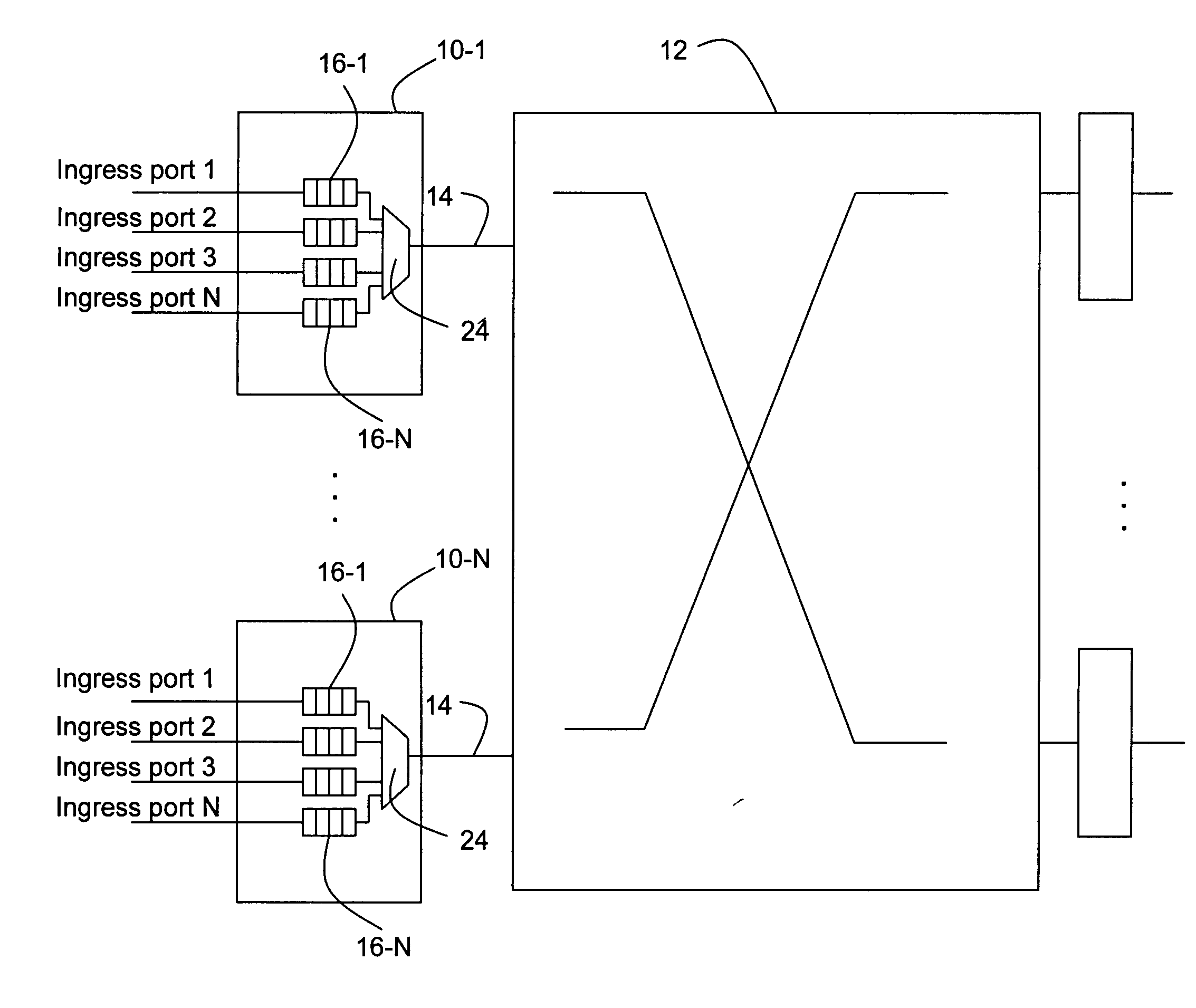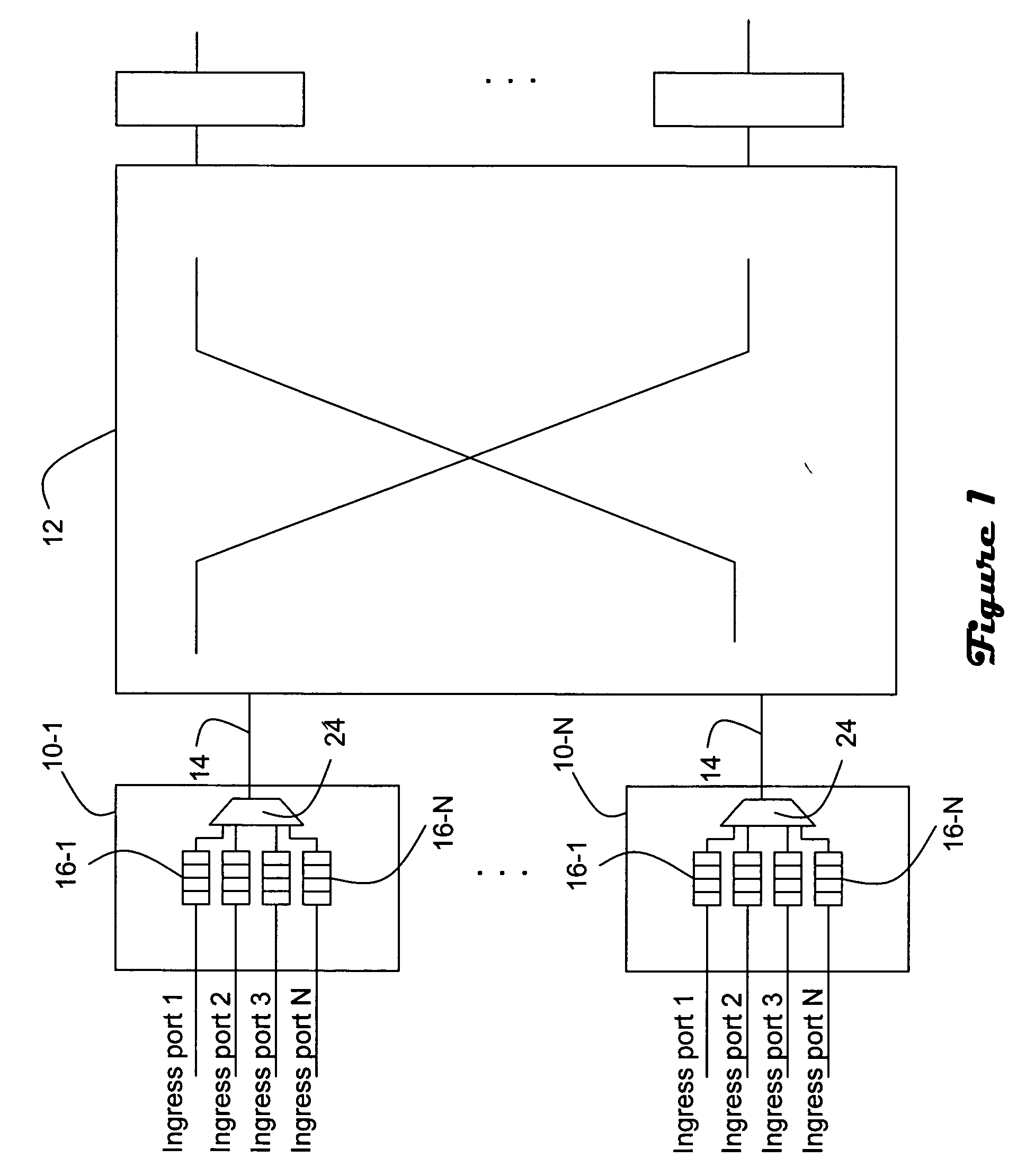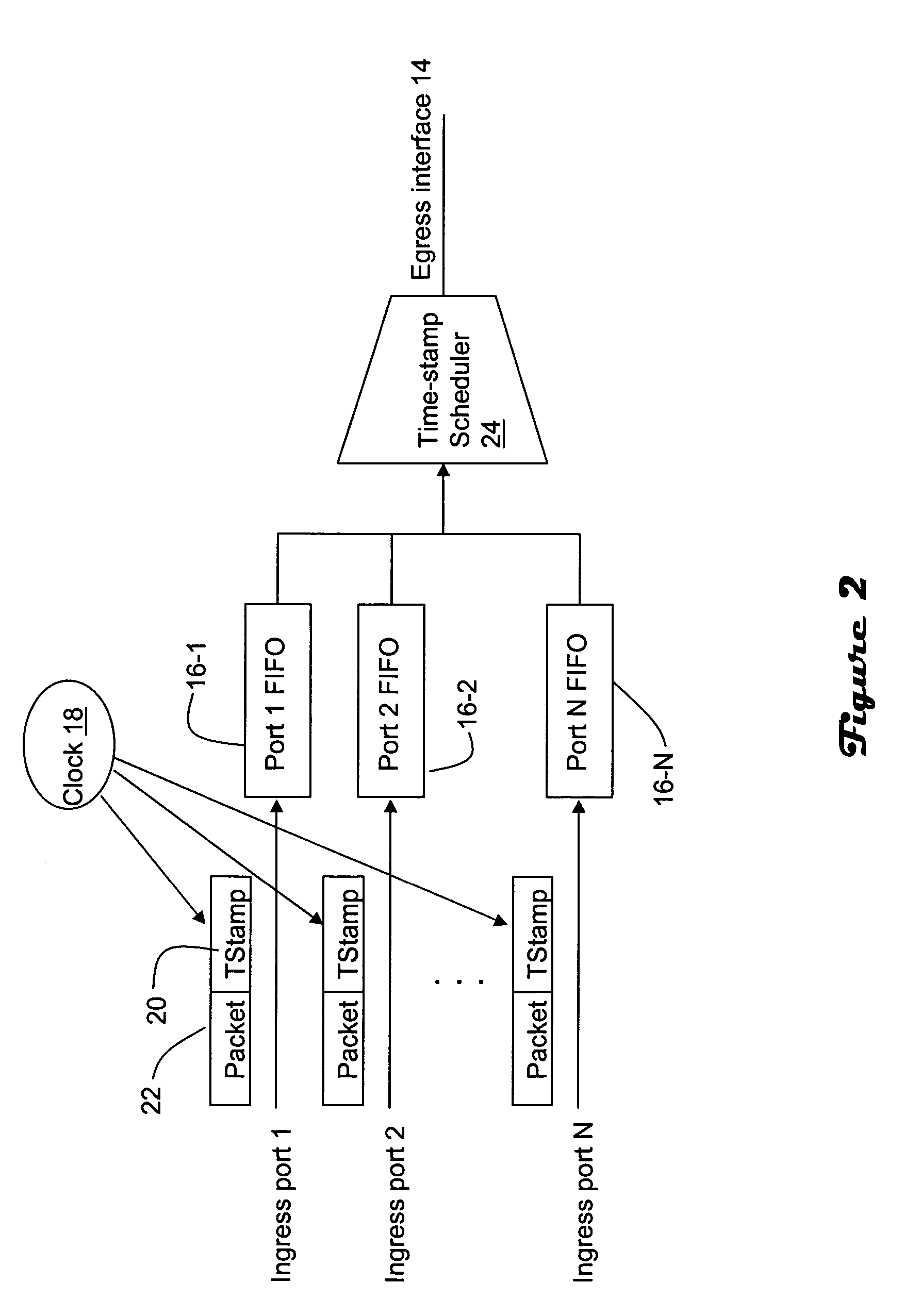Traffic multiplexing using timestamping
a traffic multiplexing and timestamp technology, applied in the field of network communication, can solve the problems of more expensive memory devices capable of functioning at higher read/write rates than devices which function at lower rates, and achieve the effects of less costly, higher read/write rates, and cost saving in implementation
- Summary
- Abstract
- Description
- Claims
- Application Information
AI Technical Summary
Benefits of technology
Problems solved by technology
Method used
Image
Examples
Embodiment Construction
[0011] Referring to FIGS. 1 and 2, time-stamp scheduled queuing is implemented in a line card associated with a switch / router. The switch / router includes a plurality of line cards 10-1 through 10-N which are interconnected via a fabric or cross-connect 12. Each line card includes a plurality of ingress ports 1-N which receive traffic from other network nodes. The line cards are operative to, among other things, multiplex incoming traffic such as packets received on the associated ingress ports for subsequent transmission on an egress interface 14 to the fabric. It should be noted that for each line card 10 the sum of the maximum transmission rates over all ingress ports 1-N is greater than the maximum rate of the egress interface 14. Hence, congestion can potentially occur at the egress interface.
[0012] The line cards each include a separate queue 16 for each ingress port. In particular, queues 16-1 through 16-N are coupled with ingress ports 1-N on a 1:1 basis. The queues are impl...
PUM
 Login to View More
Login to View More Abstract
Description
Claims
Application Information
 Login to View More
Login to View More - R&D
- Intellectual Property
- Life Sciences
- Materials
- Tech Scout
- Unparalleled Data Quality
- Higher Quality Content
- 60% Fewer Hallucinations
Browse by: Latest US Patents, China's latest patents, Technical Efficacy Thesaurus, Application Domain, Technology Topic, Popular Technical Reports.
© 2025 PatSnap. All rights reserved.Legal|Privacy policy|Modern Slavery Act Transparency Statement|Sitemap|About US| Contact US: help@patsnap.com



